Contents
- Early History
- Colonial History
- Early Institutions
- Nutan Kanya Shala
- Lal Bahadur Shastri Vidyalaya
- Local Figures and Organizations
- Bapusaheb Lakhanikar
- Post-Independence Era and Contemporary Educational Infrastructure
- Primary & Secondary Education
- Institutions of Higher Learning
- Government College of Education
- Jashbhai Muljibhai Patel College of Arts, Commerce, and Science
- R. M. Patel College
- Gandhi Vidyalay Shikshan Sanstha
- Graphs
- Enrollment and Dropout Rate
- A. Student Enrollment Numbers
- B. Student Enrollment (Class-Wise)
- C. Student Enrollment (Gender-Wise)
- D. Student Enrollment (By School Management Type)
- E. Drop Out Rate (By Schooling Level)
- F. Drop Out Rate (By Gender)
- Schools
- A. No. of Schools
- B. No. of Schools (Filtered by Gender Mix)
- C. No. of Schools (By School Management Type)
- Teachers
- A. No. of Teachers
- B. No. of Teachers (By School Management Type)
- C. No. of Teachers (Male vs Female)
- D. Education Level of Teachers
- Sources
BHANDARA
Education
Last updated on 28 July 2025. Help us improve the information on this page by clicking on suggest edits or writing to us.
The educational framework of Bhandara aligns with the broader structure of the Indian education system, encompassing pre-primary, primary, secondary, and higher education. The 19th century brought along many changes in the district’s educational system as Western frameworks were introduced. British administrators and missionaries became actively involved in shaping education in the region and the Department of Education here was established in 1862.
Still, even as colonial influences grew, the early 20th century saw a wave of local initiatives; its existence indicated an increasing public awareness regarding the importance of education. Local communities took charge of education, a movement that carried into the post-independence era, shaping the district’s educational landscape in lasting ways.
Early History
The documented history of education in Bhandara can be traced back to the 19th century. Prior to this era, information about educational centers in the district was sparse due to limited historical records. However, this does not imply that formal education was completely absent in the district. It is possible that, like many other districts in Maharashtra, indigenous systems of education were present in the district.
Colonial History
By the 19th century, the introduction of the Western education framework brought significant changes to the district, as British administrators, missionaries, and local figures became actively involved in shaping its educational landscape.
The educational department in Bhandara district was established in 1862. The conditions that prevailed here appear to have been comparatively favourable, as the Bhandara District Gazetteer (1908) records that by the early 20th century, the district was regarded as relatively advanced in education compared to other parts of the Central Provinces, of which it formed a part at the time.
Significant growth was recorded in both school enrollments and the number of educational institutions. It is noted that “the number of schools has increased from 50 to 141 and the number of scholars from 3,691 to 8,696 since 1880–81.” By 1905–06, the district had a total of 141 schools, including one high school. Two English middle schools operated in the district, one municipal and one mission-run. In addition, there were five regional language middle schools, four of which had teacher training classes.
Primary education was more widespread, with 129 primary schools recorded to have served over 7,100 students. The district also had four girls’ schools, two aided and two departmental, located in Bhandara, Pauni, and Tumsar. However, female literacy remained limited; only 199 females were recorded as literate in the most recent census at the time, and the percentage of girls in school was reported to be less than half a percent and overall, 52 per thousand males were recorded as literate. Other than this, among religious communities, literacy among Muslims and Jains was noted as being above the district average.
Early Institutions
Interestingly, several traces of the district’s colonial-era educational history remain visible today. A number of long-standing institutions established during this period continue to operate, reflecting the enduring legacy of early educational initiatives.
Nutan Kanya Shala
One notable institution that emerged during this period is Nutan Kanya Shala (NKS). The school, founded in 1892 in Gudipadwa, was among the early efforts to expand access to girls’ education in the region. The school, today, offers instruction in Marathi and semi-English and includes accessibility features for students with disabilities.

Lal Bahadur Shastri Vidyalaya
Lal Bahadur Shastri Vidyalaya, originally known as Monroe School, is another such institution that was established in 1904. According to the district Gazetteer (1979), it was, notably, the first and only high school in the region for a long time. The school provides Marathi-medium education at the primary level, with multiple language options at the secondary stage.
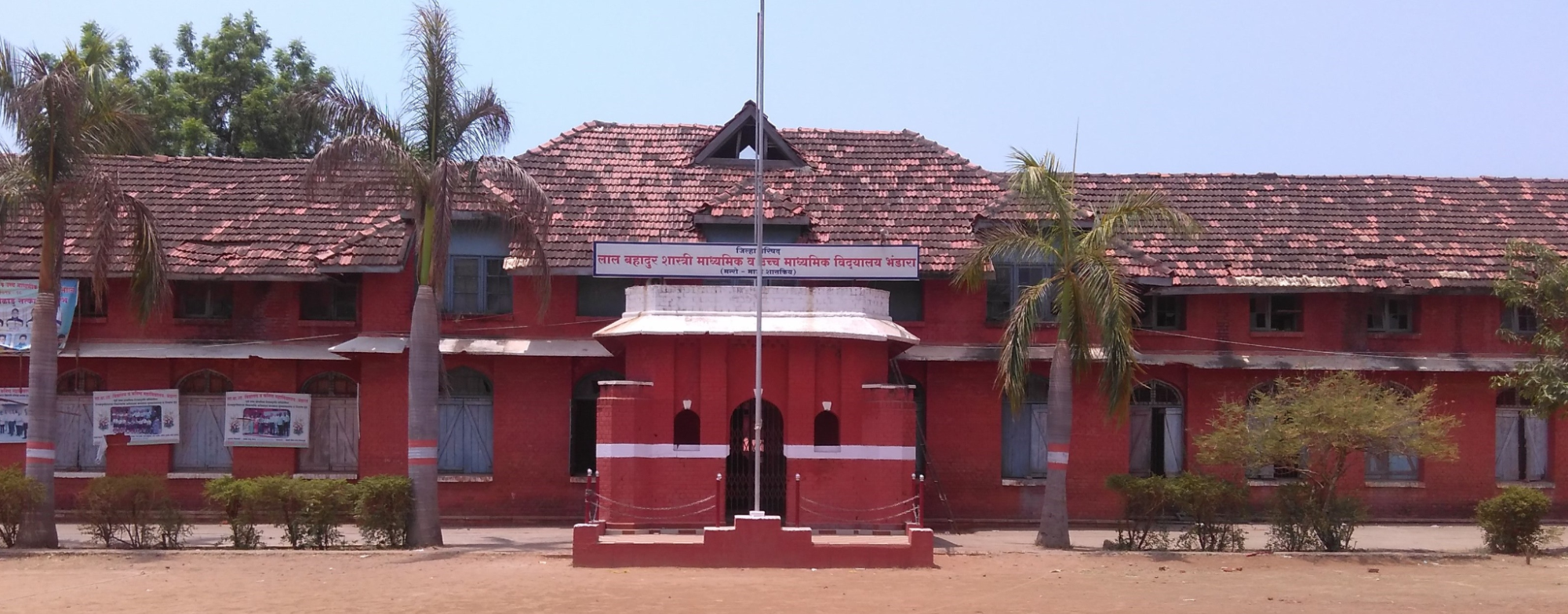
Local Figures and Organizations
As mentioned above, while entities from the West played a significant role in shaping the educational landscape of Ahilyanagar, local figures and organizations also emerged as key contributors. Many of them established institutions that continue to shape education in the district today, alongside community-led organizations that have played a lasting role in its development.
Bapusaheb Lakhanikar
Bapusaheb Lakhanikar was a social reformer and leader who was closely involved in shaping education in Bhandara district across the pre- and post-Independence periods. In 1941, he founded the Rashtriya Shikshan Sanstha, and later, in 1964, established Samarth Mahavidyalaya at Lakhani. Both efforts were part of a wider push to expand educational infrastructure in the Vidarbha region.
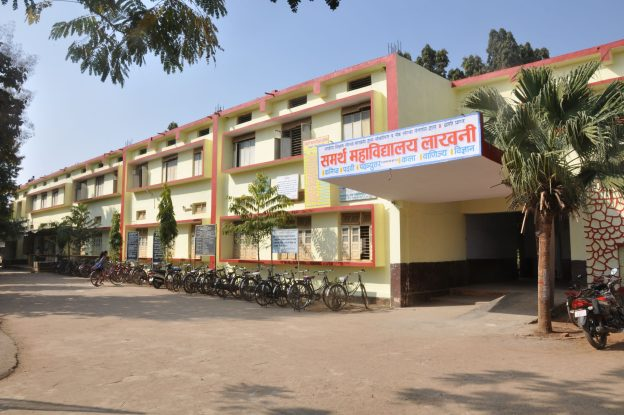
Post-Independence Era and Contemporary Educational Infrastructure
Following India's independence, the education system in the district underwent major transformations, driven by both state policies and local leadership. The introduction of structured education levels—pre-primary, primary, secondary, and higher education—along with the implementation of National Education Policies, heavily shaped Bhandara’s educational landscape. Over the years, the sector expanded with contributions from both government-funded institutions and private organizations. Additionally, the introduction of various educational boards, each offering distinct curricula and standards, provided students with more choices and opportunities.
Primary & Secondary Education
During the colonial period, both public and private efforts in education primarily focused on primary and secondary schooling, as indicated by data from district Gazetteers across Maharashtra. Higher education remained underdeveloped in most districts, including Bhandara, with gradual improvements over time. While basic infrastructure for primary and secondary education existed, its expansion was closely tied to increasing enrollment and greater involvement of local figures.
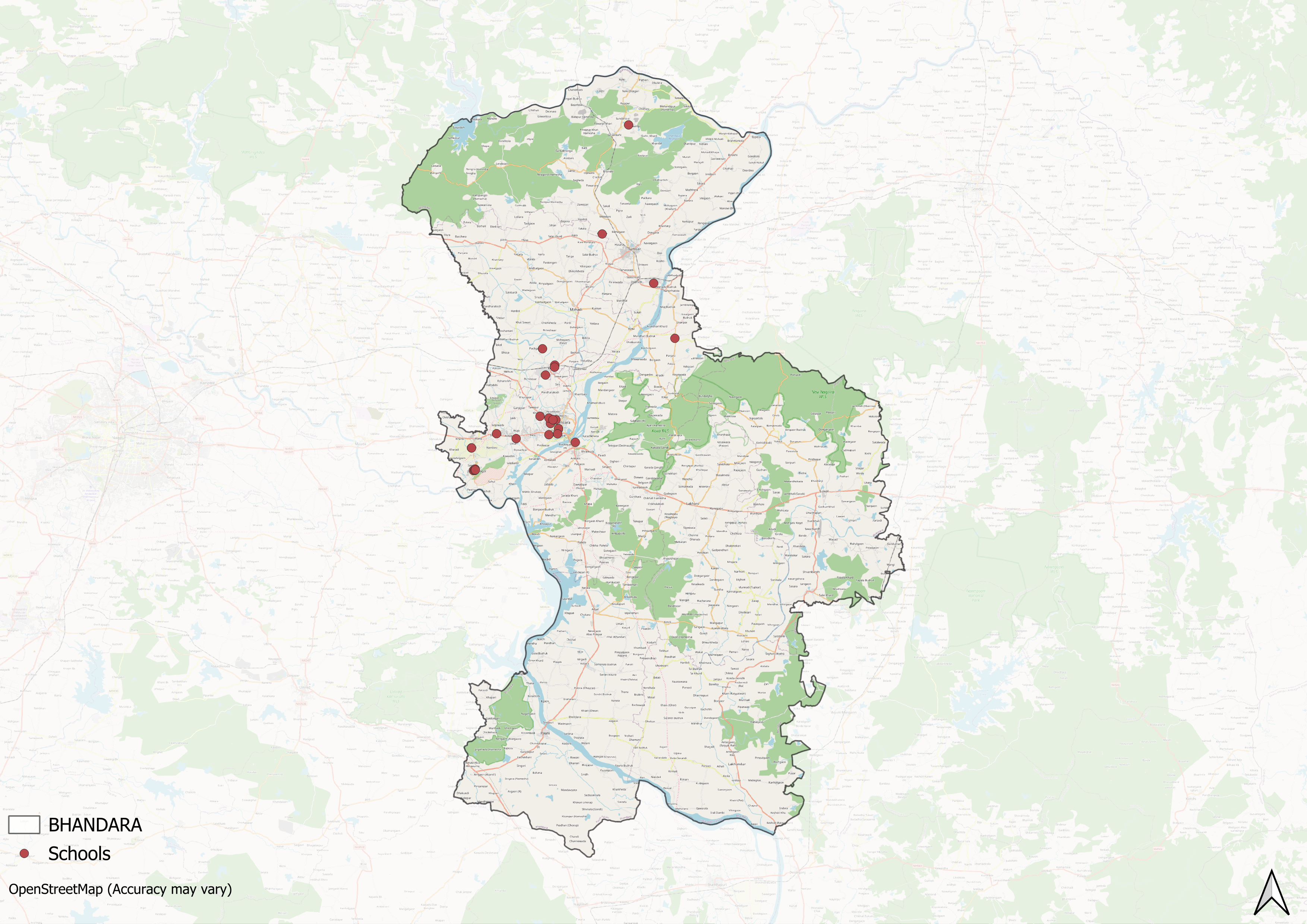
Today, this expansion is evident in the widespread presence of schools across various wards of Bhandara, with available data reflecting the steady growth of educational institutions in both urban and rural parts of the district.
Historically, students in Bhandara primarily attended Marathi medium government schools, with the introduction of semi-English education over time. As demand for English-medium education grew, locals say that private institutions such as St. Paul, St. Peters, and Royal Public gained popularity. Many parents now favor these private schools, perceiving them as offering superior education compared to traditional government schools.
However, when it comes to early childhood education, locals say that while kindergartens and Montessori schools exist, many families in the district still seem to prefer Balwadis (schools often situated in Mandirs or open areas), where children receive foundational education until the age of five.
Institutions of Higher Learning
One of the more notable developments in Bhandara’s educational landscape has been the gradual establishment of institutions offering higher education. While primary and secondary schooling expanded steadily, opportunities for advanced education appear to have remained limited for much of the district’s history. Over time, local leaders and organizations played a crucial role in addressing this gap, leading to the creation of several colleges. As a result, many institutions in the district today are privately managed, semi-private, or autonomous.
Government College of Education
Established in 1965, the Government College of Education is located near Sanskritik Bhavan and is one of the earliest institutions of higher education in the district. Focused primarily on teacher training, the college has played a significant role in shaping the region’s educational infrastructure in the post-independence period.

Jashbhai Muljibhai Patel College of Arts, Commerce, and Science
Founded in 1964, the Jashbhai Muljibhai Patel College of Arts, Commerce, and Science operates under the Gondia Education Society and is affiliated with Rashtrasant Tukadoji Maharaj Nagpur University. The college offers a range of undergraduate and postgraduate courses, and notably, also runs a Women’s Centre in collaboration with the UGC, alongside coaching programmes for competitive exams and a Centre for Foreign Languages.
R. M. Patel College
Another notable institution is R. M. Patel College, established by Shri Prafullbhai Patel in memory of his mother Late Smt. Rewaben Manoharbhai Patel. The college was envisioned to expand access to education, particularly for female students, and remains part of broader efforts to promote inclusive education in the district.
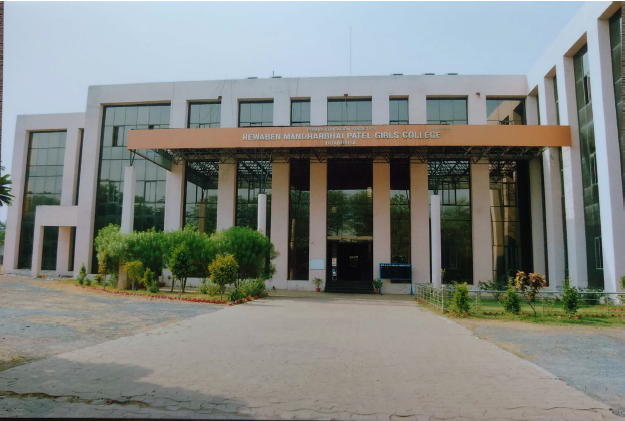
Gandhi Vidyalay Shikshan Sanstha
Gandhi Vidyalay Shikshan Sanstha in Kondha, Bhandara, was founded in 1956 by Late Shri Tukaramji Motghare, a visionary committed to uplifting rural education. His goal was to bridge the educational divide between rural and urban areas, believing that knowledge is the key to India's progress. The institution, which began as a modest school, grew through the efforts of its dedicated management team, including Late Shri Vistarji Kawade and others, into a center for empowering rural students. Its legacy reflects the influence of local social reformers in shaping education for the underprivileged in the region.
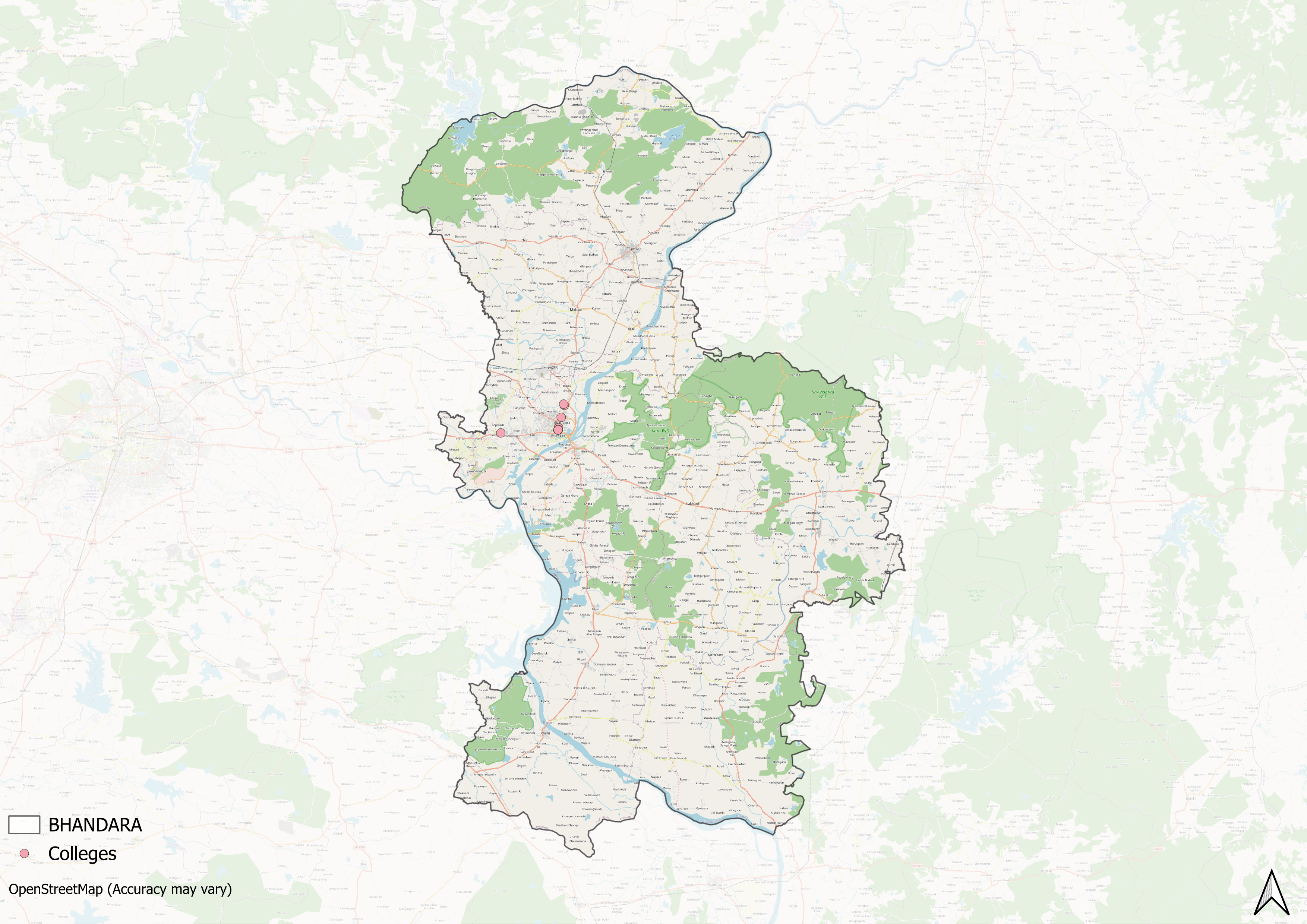
Alongside these institutions, many more spaces for higher learning exist across the district, offering programmes in a range of fields. However, while one can see here that higher education opportunities have expanded since the post-independence days, geographic disparities appear to persist, with urban centers having better access to institutions compared to rural areas.
Graphs
Enrollment and Dropout Rate
Schools
Teachers
Sources
G.V.S.S.K. About Us.https://gvssk.com/about.php
Government College of Engineering, Bhandara. Official Website.https://www.gcebhandara.org/
iCBSE. Nutan Kanya Shala, Bhandara.https://www.icbse.com/schools/nutan-kanya-sh…
J. M. Patel College. College History.https://jmpatelcollege.com/college-history/
Maharashtra State Gazetteers. 1979. Bhandara District.Directorate of Government Printing, Stationary & Publications, Government of Maharashtra, Mumbai.
Nutan Bal Shikshan Sangh. Primary School.https://nutanbalshikshansangh.org/primary-sc…
R. M. Patel College. Official Website.https://www.rmpatelcollege.com/
R.V Russel. 1908. Central Provinces District Gazetteer: Bhandara District, Vol A, Descriptive. Pioneer Press.
Last updated on 28 July 2025. Help us improve the information on this page by clicking on suggest edits or writing to us.